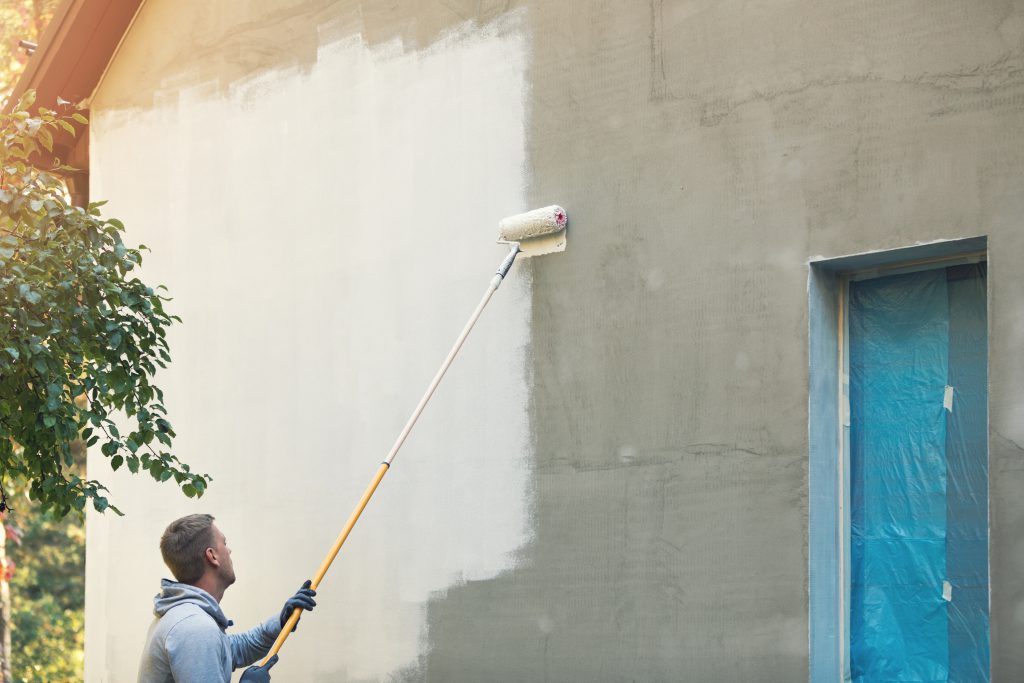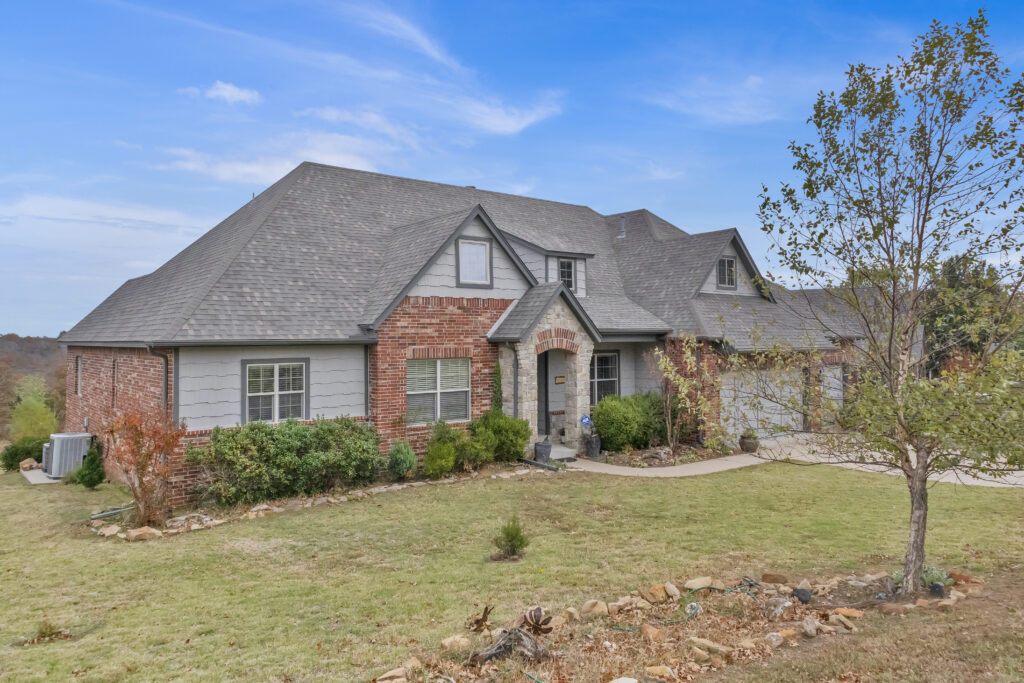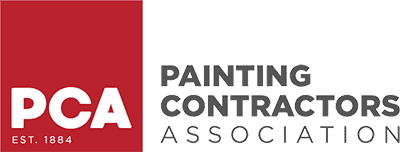Choosing the right exterior paint type for your home can be overwhelming, especially when you’re trying to match your home’s aesthetics with the unpredictable weather of Jenks, OK.
As a homeowner here, you’ve probably wondered, “Which paint will hold up best during those sweltering summer days or unexpected storms?” These are real concerns when planning exterior house painting. Maybe you’ve seen neighbors repainting every few years and want to avoid that hassle. Or perhaps you’re just eager to give your home a fresh new look that lasts.
In this blog, we’ll break down the different exterior paint types, providing you with the knowledge to make a confident decision. We’ll explore the advantages and disadvantages of each type, helping you choose the perfect paint to keep your home beautiful and protected in our unique climate.
Key Takeaways:
- Learn about the characteristics and benefits of latex, acrylic, and oil-based exterior paints to make an informed decision.
- Take into account climate, durability, and ease of application when selecting the right paint for your home.
- Proper surface preparation, application techniques, and drying times are essential for achieving a professional and long-lasting finish.

What are the Exterior Paint Types?
When it comes to exterior paint types, there are three main options to consider: latex paint, acrylic paint, and oil-based paint. Each has its own set of characteristics and benefits, making them suitable for different needs and preferences.
Latex Paint
Latex paint, also known as water-based paint, is made primarily from water, binders (such as acrylic or vinyl), pigments, and additives. This composition allows it to dry quickly and be more environmentally friendly compared to other paint types. The water content in latex paint makes it easy to clean up with soap and water. Additionally, latex paint is less likely to yellow over time compared to oil-based paints.
Advantages of Latex Paint:
- Durable and long-lasting: Ensures the paint job remains intact for years.
- Quick drying time: Speeds up the painting process, allowing for faster project completion.
- Environmentally friendly: Emits fewer VOCs and can be cleaned up with soap and water.
- Easy cleanup: Requires only soap and water for cleaning brushes and spills.
- Resistant to mildew and mold: Ideal for humid climates, preventing unsightly and damaging growths.
- Flexible: Expands and contracts with siding, reducing the risk of cracking and peeling.
Acrylic Paint
Acrylic paint is a subtype of latex paint that includes additional acrylic resins, which enhance its durability and flexibility. These resins help the paint adhere better to a variety of surfaces, including wood, stucco, and metal.
Acrylic paint is known for its ability to withstand harsh weather conditions, maintaining its color and finish for longer periods. This paint type is also more resistant to the sun’s UV rays, which helps prevent fading over time.
Advantages of Acrylic Paint:
- Exceptional adhesion to various surfaces: Sticks well to wood, stucco, and metal.
- Highly resistant to weathering: Withstands fluctuating weather conditions.
- Maintains color and resists fading: Keeps its color even under the sun’s UV rays.
- Flexible: Prevents cracking and peeling in extreme temperatures.
- Suitable for various surfaces: Can be applied on wood, stucco, and metal.
- Long-lasting and durable finish: Ensures a lasting and strong paint job.
Oil-Based Paint
Oil-based paint consists of natural or synthetic oils, pigments, and a variety of additives to enhance its properties. This composition results in a hard, durable finish that is ideal for surfaces subjected to a lot of wear and tear. The slow-drying nature of oil-based paint allows for better leveling, reducing the appearance of brush strokes and providing a smoother finish. However, oil-based paints require solvents like mineral spirits for cleanup and can emit more VOCs, making them less environmentally friendly.
Advantages of Oil-Based Paint:
- Provides a smooth, hard finish: Ideal for high-traffic areas and durability.
- Excellent adhesion and coverage: Covers stains and imperfections effectively.
- Great for older homes: Especially useful for hiding flaws on aged surfaces.
- Levels out well: Reduces the appearance of brush strokes for a smoother finish.
- Long-lasting durability: Offers a strong and resilient paint job.
Factors to Consider When Choosing Exterior Paint Types
Selecting the right exterior paint type involves more than just picking a color you love. Several key factors can influence your decision, ensuring the paint not only enhances your home’s appearance but also stands up to the elements.
Climate Considerations
When is the best time to paint outside? The weather can be quite variable, with hot summers, occasional storms, and fluctuating temperatures. It’s essential to choose an exterior paint type that can withstand these conditions. Latex and acrylic paints are excellent choices because they are flexible and can expand and contract with temperature changes, preventing cracks and peeling. Their resistance to mold and mildew is also vital in a humid climate.
Durability and Longevity
You want your exterior paint project to last as long as possible, reducing the need for frequent repainting. Acrylic and latex paints are known for their durability, often lasting up to 10 years with proper maintenance. Oil-based paints, while durable, may require more frequent touch-ups in high-traffic areas due to their harder finish.
Ease of Application and Maintenance
Ease of application can save you time and effort. Latex and acrylic paints dry quickly and are easy to clean up with water, making them convenient choices. On the other hand, oil-based paints take longer to dry and require solvents for cleanup, which can be more cumbersome.
Best Practices for Applying Exterior Paint
Once you’ve chosen the right exterior paint type, proper application is key to achieving a professional and long-lasting finish. At Impressions Painting, we follow a process to ensure outstanding results for every project:
Surface Preparation
- Clean the surfaces to remove dirt and mildew.
- Sand the surfaces to create a smooth base.
- Fill and sand any cracks or holes.
- Apply a primer if needed to ensure proper adhesion.
Proper surface preparation is essential for ensuring that the paint adheres well and lasts longer. Our painters begin by thoroughly cleaning the surfaces to remove dirt, mildew, and loose paint. This step is essential for creating a clean slate for the new paint.
Next, we sand the surfaces to create a smooth and even base. Any cracks or holes are filled and sanded down to ensure a uniform surface, which is critical for achieving a flawless finish.
Application Techniques
Using the right techniques during application can make a significant difference in the final appearance and durability of the paint project. We always follow the manufacturer’s instructions for mixing and applying the paint. We use high-quality brushes and rollers to ensure even coverage and minimize streaks. Our process involves applying the paint in multiple thin coats rather than one thick coat. This method helps achieve a smooth and even finish that lasts.
Drying and Curing Times
Adequate drying and curing time between coats is essential for a durable finish. While latex and acrylic paints dry relatively quickly, oil-based paints require more time. Our team checks the recommended drying times on the paint can and plans the project accordingly to avoid rushing the process. This attention to detail ensures a long-lasting and resilient paint project.
Final Thoughts
Choosing the right exterior paint types for your home is an essential step in ensuring a beautiful and long-lasting finish. Understanding the differences between latex, acrylic, and oil-based paints can help you make an informed decision that suits your specific needs and preferences. Each type of paint has its own advantages, from the quick drying and easy cleanup of latex paint to the exceptional adhesion and weather resistance of acrylic paint, and the smooth, hard finish of oil-based paint.
When selecting an exterior paint, consider factors such as climate, durability, and ease of application. Proper surface preparation and following best practices during application are essential for achieving professional results. By taking these steps, you can ensure that your exterior paint job not only enhances your home’s curb appeal but also stands up to the elements for years to come.
At Impressions Painting, we are expert painters dedicated to providing top-quality residential and commercial painting services. We serve Tulsa, Bixby, OK and the surrounding areas, ensuring that every project is completed with precision and care.
Call us at 918-842-7006 for a FREE estimate and let us help you transform your home with the perfect exterior paint!





